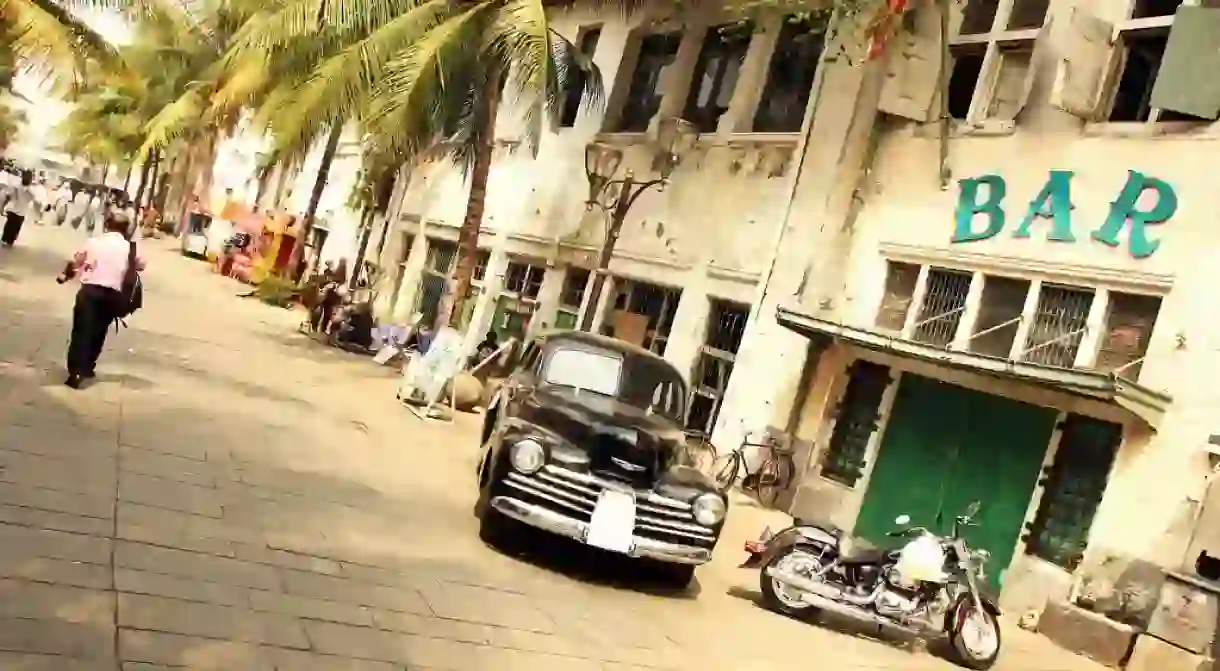The 10 Most Beautiful Old Towns in Indonesia

A slice of Europe in Sumatra, the Paris of Java and an 18th century metropolis – these beautiful Indonesian old towns will transport you back in time.
Indonesia’s long and winding history has left behind a number of invaluable heritage sites. These charming, historical ‘old towns’ bear witness to the stories and events that helped shape the nation. Discover the most beautiful old towns scattered across the archipelago.
Kota Tua Jakarta
Museum, Park, Building

Semarang Old Town
Building

This small neighbourhood in Central Java was a colonial trade centre and military hub during the 1700s. Nicknamed ‘Little Amsterdam’, the buildings here channel the European architecture of the time – characterised by elegant whitewashed and brick facades, big entryways and colourful stained glass. Some unmissable highlights include the old ‘thousand door’ office building, Lawang Sewu, and the Blenduk Church with its iconic dome.
Bandung Old Town
Building

Being a fashion mecca and home to beautiful architecture, Bandung was nicknamed ‘Parijs van Java’, or the Paris of Java, during the colonial era. Dutch officials built a slice of Europe in the town, with this heritage preserved in its streets and landmarks. Braga Street is considered one of the old city’s centres of culture, lined with sophisticated buildings that have now mostly become hip bars or cafés. Not far from Braga, Asia Afrika Street is almost entirely occupied by colonial heritage buildings, some repurposed as government offices and museums.
Surabaya Old Town
Building

Located in East Java, Surabaya was once a busy port town serving as a trade centre and transit hub for enterprising traders making their way across the archipelago. European voyagers, and later the Japanese, had at one time or another set up camp in this city, leaving architectural trails behind. Some of them are still functioning buildings, including what is now Hotel Majapahit and Kepanjen Cathedral. High tea at Hotel Majapahit is still one of the most popular activities for those who want to experience Surabaya’s past life.
Malioboro Street
Building

Palembang Old Town
Building

Palembang is the capital city of South Sumatra and the oldest city in the entire Indonesian archipelago. As an important fixture of the ancient trade route between China, India and later, European countries, this city is imprinted with a wide range of different cultural influences. Many important landmarks were established along the great Musi river and around the Ampera Bridge, many of which are still used today. The current mayor’s office for example, was originally built as a water tower during Dutch rule, while a former resident office has been repurposed as a municipal museum. Kambang Iwak lake is still surrounded by old European-style residences and churches.
Medan Old Town
Building, Natural Feature

Medan is Indonesia’s largest city outside Java, with a dynamism and diversity typical of an urban sprawl. Even with modern advancements, the city has still managed to preserve its old colonial buildings, most of which are concentrated around Ahmad Yani Street. Medan’s architecture is relatively newer than those in other cities, mostly built around the late 1800s and early 1900s. Eclecticism and Art Deco influences, are evident. Aside from the old city hall, post office and other former colonial administrative buildings, the Grand Mosque and Maimun Palace of the Deli Sultanate were initially designed by a Dutch architect – presenting a unique fusion of European architecture and local design elements.
Salatiga Old Town
Building

Due to its cool weather and gorgeous highland geography, Salatiga was once a cherished holiday destination for wealthy officials from Yogyakarta and Semarang. Most of the colonial heritage buildings are residences, villas and churches, reflecting the unique individual tastes of their former owners. The oldest buildings date as far back as the 1700s, many of which still adorn the main streets of modern Salatiga: Diponegoro Street, Sudirman Street and Hasanuddin Street. Other ‘newer’ buildings from the 19th century reflect a different architectural style, influenced by European trends such as Art Nouveau and Art Deco.
Solo Old Town
Building

Solo was a prominent centre of governance in Indonesia for a long time, from the reign of the ancient empires, sultanates, and up until colonial rule. Through different eras and sovereignties, the communities have been assimilated with different cultural influences. The sultanate palace complex, for instance, has hints of European or Dutch design elements in its architecture. A lineup of colonial buildings can also be observed along the areas around Slamet Riyadi Street, including the iconic Omah Lowo and Loji Gandrung.
Kediri Old Town
Building
This humble town in Central Java used to be the metropolis of the prominent Kediri Kingdom, as well as the trade and production centre for sugar and cigarettes. Dhoho Street was (and still is) a lively shopping district with old colonial buildings lining its sides. Many of the buildings have been modified, but signs of a time gone by still reverberate through their worn-out corners and structures. Not far from the street lies the iconic ‘red church’, which houses a rare 1867 copy of the Bible in Dutch.













